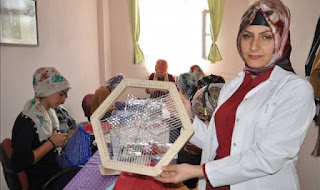Attractive Nuisance, Defined.

Color me skeptical, but I find it hard to believe our MIA workers will use this technology strictly as intended, and that all scans will be completely random:
Sure. I feel much better now, there's no way this technology could be misused or perverted to less benign ends. Question: how long before these images start cropping up on MySpace or -- if you are a celebrity -- egotastic, etc.?As passengers step inside the machine, they extend their arms and legs for several seconds, as millimeter wave technology creates an image. About 25 feet away, in a covered booth, a security officer in radio contact, views the ghostly silhouette -- with the face blurred -- on a screen. The officer determines if a concealed weapon, such as a ceramic knife, or explosive detonation cord, exists, Hatfield said.
''The image projected is more humanoid than human,'' he said. ``What's important is providing a clear view of a threat object. And the person going through the machine will never see the operator.''
`RANDOM SELECTION'
So far, the technology has been used for five days at two MIA checkpoints, at Concourses G and J, replacing the machines that emitted puffs of air. At least two more body-imaging machines will be deployed in the next few months, one at J and one at an interim checkpoint at C/D, Hatfield said. Each machine costs $170,000. To date, no explosives have been detected, he said.
At least for now, the TSA is using ''continuous, random selection'' to choose passengers for the machines, and it is optional. Travelers who decline will be physically patted down. All passengers must still go through metal detectors.
''For our travelers, through this airport, this machine adds even an additional layer of security,'' said Miami-Dade Aviation spokesman Marc Henderson.
`STRIP SEARCH'
Full body imaging technology has been in the works for at least five years, as the government grappled with issues of privacy and civil liberties, Hatfield said.
''It is tantamount to, essentially an electronic strip search, and that is our concern,'' said Howard Simon, executive director of the American Civil Liberties Union of Florida. ``The most intrusive technology that intrudes upon personal privacy should not be the first line of our security.''
Hatfield said that the TSA has mitigated those concerns by having the security officer located in a remote booth, where he or she never sees the passenger. Furthermore, the passenger's face is blurred on the screen. And the image is permanently deleted immediately after viewing and cannot be stored, printed or transmitted, Hatfield said.


Yorumlar
Yorum Gönder